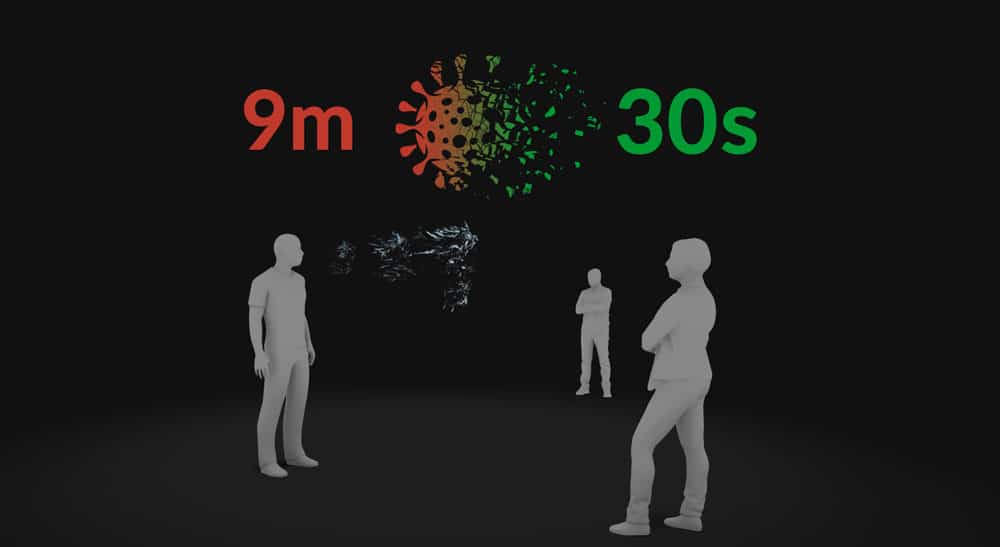CO2 control in environments to reduce the risk of COVID19 contamination

The control of CO2 values in air-conditioned rooms is a good practice that every installer/manager of air conditioning systems should always implement.
Since people during their stay in an environment produce carbon dioxide through breathing, the level of CO2 is an excellent indicator of air quality. This control is even more important today when seen in a context in which, for obvious reasons of energy saving, we try to improve room closures and thermal transfer, with the side effect of limiting air exchange.
A good air conditioning system should therefore provide for air exchange and this exchange should be of a controlled type (monitoring the actual air quality in the room).
Relationship with COVID contagion risks
An increasing number of tests reveals that aerosols are a possible transmission route for the SARS-CoV-2 virus. These are small droplets, averaging about 5 μm in size, which are released during speech, singing, coughing and sneezing. These particles have been shown to contain the SARS-CoV-2 virus, which can remain infectious for up to 3 hours.
The danger is that, due to their small size, these aerosols can remain in the air for up to 9 minutes. Adequate ventilation has been shown to reduce the time needed to remove most droplets by up to 30 seconds, making interior spaces safer.
 The Federation of European Heating, Ventilation and Air Conditioning Associations (REHVA) recommends using CO2 measuring devices inside the buildings for assess the risks of SARS-CoV-2 transmission via aerosol.
The Federation of European Heating, Ventilation and Air Conditioning Associations (REHVA) recommends using CO2 measuring devices inside the buildings for assess the risks of SARS-CoV-2 transmission via aerosol.
Monitoring the CO2 level allows you to know at a glance whether the ventilation of the rooms is sufficient and whether there is a high risk of COVID infection by aerosols.
In the case of air conditioning systems with fan coils, the ventilation of the premises is generally managed separately or not at all. In this case the monitoring of CO2 values is particularly important, because fan coils and split units with both cooling or heating functions improve thermal comfort and it may take too long before the occupants perceive poor air quality and provide a change.
Relationship between CO2 level and well-being
Poorly ventilated dwellings, stuffy classrooms and smelly meeting rooms. The cause, in addition to humidity and temperature, is primarily carbon dioxide. An odourless gas, perceptible to humans only because of its negative effects: malaise, difficulty in concentrating and reduced performance.
Man inhales the oxygen present in the air during inhalation and releases carbon dioxide into the air during exhalation. Inhaled air contains about 21% oxygen and 0.035% carbon dioxide. Exhaled air, on the other hand, contains only 16% oxygen, but already 4% carbon dioxide. Carbon dioxide is toxic to humans at a concentration of 2.5%, but already from a concentration of 0.08% (800 ppm) of carbon dioxide performance, concentration and well-being are compromised.
In closed rooms such as classrooms, offices or meeting rooms, where there are often many people and ventilation can be limited, carbon dioxide values of between 5,000 and 6,000 ppm can be detected after just a few minutes. CO2 sensors reliably measure the CO2 concentration. The measured values can be used for ventilation control as an indicator to increase the flow of air from outside.
